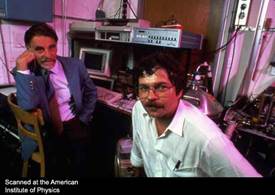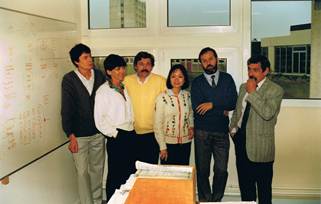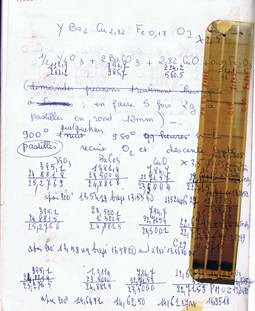


 Georg Bednorz (1950-) and Alex Müller (1927-) published an article in 1986 that revolutionized the domain of superconductivity: they discovered in a new type of materials, called cuprates, a superconducting state at an abnormally high temperature, -238°C.
Georg Bednorz (1950-) and Alex Müller (1927-) published an article in 1986 that revolutionized the domain of superconductivity: they discovered in a new type of materials, called cuprates, a superconducting state at an abnormally high temperature, -238°C.
Both of them are specialized in perovskites such as SrTi03, oxides with particular structural and ferroelectric properties. They studied their properties at low temperatures and decided in 1983 to look for superconductivity. In 1985, they started studying materials made from barium, copper and lanthanum, which had been discovered shortly before by Bernard Raveau. 
Bednorz and Müller synthesized them and made the number of electrons change by changing the proportions of barium and lanthanum systematically. At the beginning of 1986, they discovered that one of these compounds was superconducting at a record temperature. They published their discovery in a prudent article called “Possible high Tc superconductivity in the Ba−La−Cu−O system” because they were not able to measure the Meissner effect (which they did in 1987).
 This discovery paved the way to such frenzy among physicists that one of the conferences that were held shortly after was nicknamed “the Woodstock of physics”! The two physicists won the Nobel Prize in 1987, only a year after their discovery, which in itself is another world record!
This discovery paved the way to such frenzy among physicists that one of the conferences that were held shortly after was nicknamed “the Woodstock of physics”! The two physicists won the Nobel Prize in 1987, only a year after their discovery, which in itself is another world record!
